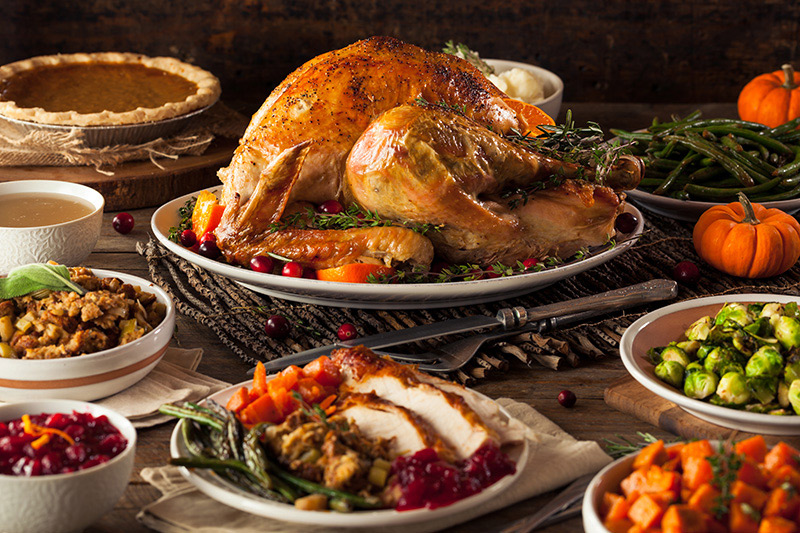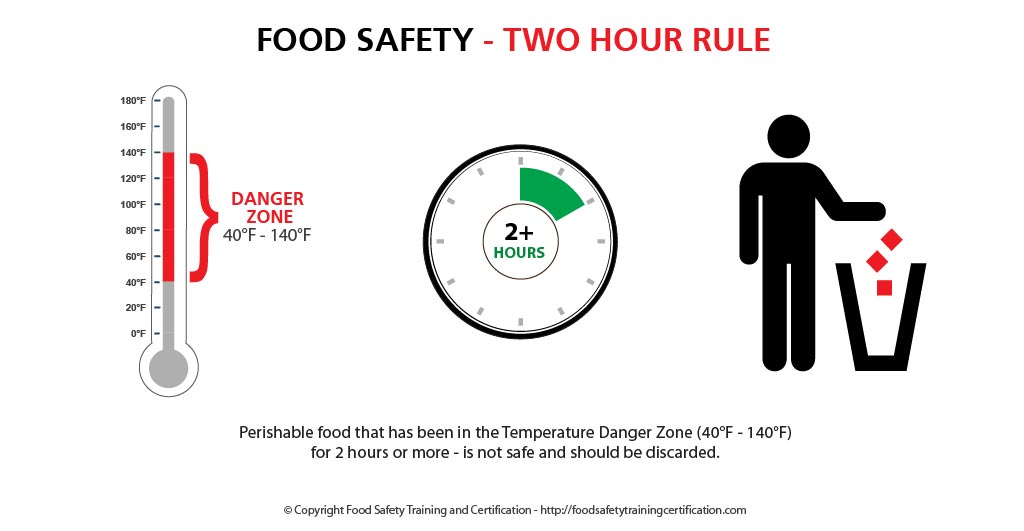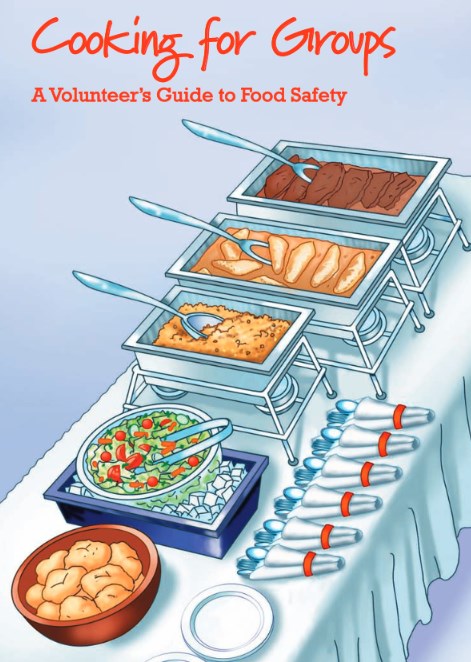A popular way to celebrate the holidays or any party occasion is to cook a lot of food and invite friends and family. However, this type of food service – where foods are left out for long periods – leaves the door open for uninvited guests – bacteria that cause foodborne illness. Festive times for giving and sharing should not include sharing foodborne illness.
 Image Source: Shutterstock
Image Source: Shutterstock When preparing food for the holidays, remember that if food safe procedures are not followed, bacteria can make people sick.
- Learn about foodborne pathogens, cross contamination, cold and hot food safety, and best practices to prevent foodborne illness.
- Food Manager ANSI Certification: $99.00 - Valid in all States
- Food Handler Training: Only $7.00!
- 10% OFF: Enter Promo Code "train10off" at Checkout
Food Safety Basics
Good hygiene and cooking foods thoroughly are the best and easiest ways to avoid food illness. To prevent food illness it is recommended to:
- Always clean your hands, utensils and food surfaces before using them;
- Separate foods and avoid cross-contamination. Never store raw foods next to ready-to-eat foods;
- Cook foods to a safe temperature. Check them using a food thermometer:
- ground meats: 160°F
- fresh beef, veal, and lamb: 145°F (let stand 3 minutes)
- poultry: 165°F
- pork and ham: 145°F (let stand 3 minutes)
- egg dishes: 160°F, cook eggs until whites are firm
- leftover dishes and casseroles: 165°F
- fish: 145°F or flesh can come apart with a fork
- shellfish: cook until shells open on their own
- Refrigerate or freeze perishable foods within two hours since purchase or preparation;
- Defrost food safely in the refrigerator;
- Make sure to dispose of food if you are unsure of its safety.

Temperature “Danger Zone” & Two Hour Rule
Bacteria multiply rapidly between 40°F and 140°F. To keep food out of this temperature “Danger Zone,” keep cold food cold and hot food hot.
- Keep food cold in the refrigerator, in coolers, or on the serving line on ice.
- Keep hot food in the oven, in heated chafing dishes, or in preheated steam tables, warming trays and/or slow cookers.
- Never leave perishable foods, such as meat, poultry, eggs and casseroles in the “Danger Zone” over 2 hours; 1 hour in temperatures above 90°F.
Leftovers will last for 4 days in the refrigerator, so if you know you won’t use them right away, pack them into freezer bags or airtight containers and freeze. For best quality, use your leftover frozen turkey within four months.

Food Allergies
For parents of a child with food allergies, the holidays can be a stressful time of year. Many holiday foods contain at least one of the top eight allergens: milk, eggs, wheat, soy, fish, shellfish, tree nuts and peanuts. This can make it difficult for kids with food allergies to enjoy holiday meals.
According to Food Allergy Research and Education (FARE), about 32 million people in the U.S. have food allergies (and 5.6 million of those are children under age 18).
Likewise, the Centers for Disease Control & Prevention (CDC) reports that the prevalence of food allergy in children increased by 50 percent between 1997 and 2011. And between 1997 and 2008, the prevalence of peanut or tree nut allergy appears to have more than tripled in U.S. children.
- Prepare the child’s plate first so there is no chance of cross contamination through switching of utensils from other dishes.
- Communicate with child about a plan for staying allergen safe during holidays.
- For school parties, attended or talk to teacher ahead of time and designate an adult and friend who can make sure child eats only foods that are safe.
- Send a safe treat for your child in case they cannot have any of the provided food items at a party.
- Carrying an auto-injectable EpiPen and be ready to recognize allergy signs and symptoms.
USDA Brochure – Cooking for Groups
This brochure helps people prepare and serve food safely for large groups.

Additional Resources – Cooking for Groups Food Safety
- Cooking for Groups FSIS Image Library – Brochure graphics are offered here in a high resolution format (EPS) and low resolution format (JPG). Most are available in color or black and white (B/W).
- 7 Food Safety Steps for Successful Community Meals | PDF
- Cooking for Groups: A Volunteer’s Guide to Food Safety (USDA)
Prepare and serve food safely for large groups such as family reunions, church dinners, and community gatherings. - “No-Show” Guests Jeopardize Food (USDA)
If a meal must be delayed or cancelled, food must be handled “just right” to remain safe. - Holiday or Party Buffets (USDA)
When foods are left out for long periods, you may have uninvited guests — bacteria that cause foodborne illness.

